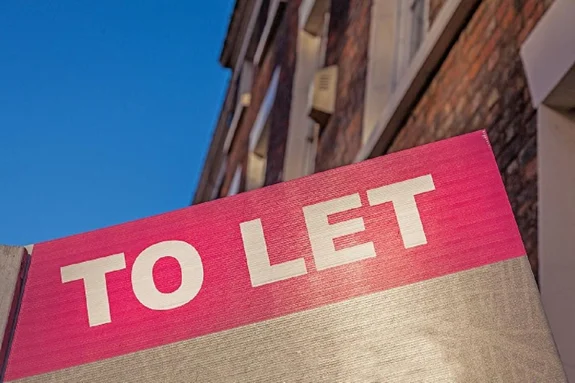News
Overpaying: The Key to Becoming Mortgage Free and Saving Thousands
One of the few things all homeowners have in common is the desire to become mortgage-free. However, most mortgage payers simply resign themselves to the fact that they will be tied to their debt and all associated borrowing costs for decades to come.
Not realising they could be needlessly throwing away tens of thousands of pounds.
New figures published by the Homeowners Alliance suggest that the average homeowner now pays around £3,154 in interest each year on their mortgage. Given the average 25, 30, or 35-year mortgage terms, this equates to an astonishing amount of interest paid over the life of the typical home loan.
Both the Homeowners Alliance and the Council of Mortgage Lenders are advising mortgage payers to seriously consider overpaying where possible.
The vast majority of lenders allow mortgage payers to pay over the agreed monthly instalments, either on occasion or on a regular basis. Those who do so often stand to make significant savings by repaying their mortgage early and reducing overall borrowing costs.
According to the Homeowners Alliance, overpaying by just £60 per month can, for some mortgage payers, reduce the length of the mortgage term by as much as three years. Even when accounting for any early repayment fees that may apply, this could still amount to a significant saving.
The higher the monthly overpayment, typically limited to 10% without incurring additional fees, the faster the loan is repaid. Depending on the length of the term and the size of the mortgage, this could equate to tens of thousands of pounds in savings and becoming mortgage-free several years earlier.
Refinancing to save money
Another option that can lead to significant savings is refinancing at the right time. This can be particularly useful for homeowners approaching the end of the initial fixed-rate introductory period.
When the initial two-year, five-year, or ten-year fixed-rate period of a mortgage comes to an end, the loan is automatically switched to the lender’s standard variable rate (SVR). At this point, the APR on the loan could jump significantly, resulting in a much higher monthly payment and significantly greater long-term debt.
Prior to this automatic transition, borrowers have the option of comparing the market to find a better deal from a competing lender. With the help and support of an experienced broker, being switched to an uncompetitive SVR with an elevated APR can be avoided entirely.
Even at a later date, it is still possible to refinance to a more competitive deal and reduce overall mortgage debt by thousands, though the earlier action is taken, the higher the potential for making significant savings.
For more information on any of the above or to discuss the options available for reducing your mortgage debt, contact a member of the team at UK Property Finance today.
How do Average Credit Scores Vary in Different Parts of the UK?
You may have wondered whether your credit score is better or worse than the UK average, or you may wonder whether average credit scores differ significantly from one part of the country to the next.
Each of the UK’s primary credit agencies has a different scoring system. The average score with one credit agency could be entirely different from that of another.
With Equifax, a credit score of 550 would rank you within the “good” bracket. Over at Experian, the same 500 score would give you a credit rating of “poor,”, while TransUnion brackets a score of 550 as “very poor.”.
Here is a brief overview of how the three primary agencies classify credit scores as of 2021:
Credit score ratings according to Equifax
| Score | Band |
| 0-438 | Poor |
| 439-530 | Fair |
| 531-670 | Good |
| 671-810 | Very good |
| 811-1000 | Excellent |
Credit score ratings, according to Experian
| Score | Band |
| 0-560 | Very Poor |
| 561-720 | Poor |
| 721-880 | Fair |
| 881-960 | Good |
| 961-999 | Excellent |
You can check out your Experian credit score for free, though it will cost you £7.99 a month to see your full report. This shows your credit history and financial associations. If you want to see this, you can sign up for a free trial, which lasts for 30 days.
Credit score ratings according to TransUnion
| Score | Band |
| 0-550 | Very Poor |
| 551-565 | Poor |
| 566-603 | Fair |
| 604-627 | Good |
| 628-710 | Excellent |
As for the question “do average scores vary in different parts of the UK?” The answer is yes, they do. Depending on where you live, the average consumer is likely to have an entirely different credit score based on where they live.
According to Experian’s credit rating system, the most widely used indicator of creditworthiness, the regions with the highest average credit score are as follows:
1) Isles of Scilly: 881
2) Wokingham: 877
3) Chiltern: 874
4) Elmbridge: 872
5) Hart: 872
6) Waverley: 871
7) St Albans: 871
8) South Cambridgeshire: 867
8) Brentwood: 850
10) West Oxfordshire: 844
At the opposite end of the scale, the locations with the lowest average credit score in the UK are:
1) Kingston-Upon-Hull: 696
2) Blaenau Gwent: 702
3) Blackpool: 709
4) Merthyr Tydfil: 712
5) Middlesbrough: 713
6) Northeast Lincolnshire: 717
7) Knowsley: 722
8) Hartlepool: 724
9) North Ayrshire: 737
10) St. Helens: 744
How to boost your credit score
For anyone concerned about their credit rating, there are several options available for giving things a nudge in the right direction.
None of the following are likely to propel you in the rankings overnight, but you could nonetheless contribute a few additional points and perhaps make a real difference:
- Pay off as many smaller debts as you can, such as credit card balances and overdrafts. A simple yet effective demonstration that you are a responsible borrower that can be trusted
- If you have not already done so, ensure your name appears on the electoral roll. Signing up takes seconds and almost always makes a positive difference to your credit score.
- Avoid late payments and missed payments at all costs, which in almost all instances will inflict further damage on your credit score.
- Before applying for any financial products or credit facilities, make sure you are 100% confident your application will be accepted.
If in doubt, consult with an independent financial adviser or specialist broker to discuss the options available in more detail.
Will Build-to-Let Be the Next Big Thing for Banks and Investors?
Once little more than a novelty, the UK’s build-to-let sector is slowly but surely finding its way onto the radars of major investors. In particular, Lloyds Bank has outlined an ambitious plan to build an extensive 50,000-strong BTL property portfolio by the end of the current decade.
Consequently, many private renters across the country could soon see their conventional landlords replaced with banks and businesses.
With available inventory at an all-time low and skyrocketing rents having become the norm, the future private rental sector has never looked brighter, at least for those buying or building properties to rent out to private tenants.
Build-to-let is the arm of the sector where new-build properties and flats are owned and managed by just one landlord after being built to order. Advocates of big business BTL insist that corporate ownership could solve many of the problems faced by renters today, ranging from unacceptable fees to “rogue” landlords and short-term leases.
Announcing its aggressive move into the BTL sector, Lloyds is establishing its own private home rentals subsidiary, Citra Living, with the intention of adding tens of thousands of homes to its property rentals portfolio by 2030.
This one corporate landlord alone would occupy a full 1% of the UK’s total rental stock.
Meanwhile, John Lewis has also outlined plans to build homes to rent out privately as part of its five-year strategy to expand “beyond retail” Specifically, the company said at least £400 million would be invested in new ventures, with the aim of generating 40% of its overall profits from non-retail activities within the next 10 years.
“Entering the ‘build to rent’ market also allows us to furnish properties using John Lewis Home products and deliver Waitrose food,” it said.
How private renters stand to be affected
Some analysts and experts are optimistic about the potential for larger banks and corporations to move into the buy-to-let sector. They believe that by taking control of the market at least partially away from smaller landlords, private tenants may be afforded more protection and rights.
“The hope is that a larger corporate landlord such as Lloyds Bank would have the infrastructure, expertise, and finances to ensure that they comply with their legal obligations, as opposed to smaller and ‘rogue’ landlords, meaning tenants should be provided with the information and protection they are entitled to,” commented Hodge Jones & Allen housing team partner Sophie Bell.
There are those who only envisage problems for tenants and the sector long-term, should the trend of corporate BTL property ownership become popular over the coming years.
By 2030, Lloyds Bank has set its sights on building at least 50,000 homes, which would subsequently make it the single biggest BTL landlord operating in the UK.
“The only upside for consumers is that it may, and I emphasise the word may bring lower rents if there are more properties to occupy,” warned Lewis Shaw, founder of Shaw Financial Services.
“However, the likely outcome is that the opposite will happen; it would be very easy for large institutional investors or lenders to monopolise large swathes of an area and increase prices.”
Is An Interest-Only Mortgage an Economical Alternative Option?
At the risk of jumping straight to the conclusion, the short answer is sometimes
Comparing a conventional repayment mortgage to an interest-only mortgage is a little like comparing apples to oranges. Both have their benefits and points of appeal, though they are completely different in nature.
For most people, the prospect of taking out an interest-only mortgage does not seem realistic. The idea of being left with a major debt to repay at the end of the mortgage term can be off-putting, and understandably so.
Just as is the case with all financial products, affordability and cost-effectiveness vary on a case-by-case basis.
The difference between the two mortgage types
Roughly summarised, this is what makes the difference between an interest-only mortgage and a repayment mortgage:
- With a repayment mortgage, you gradually repay the full outstanding balance of your mortgage over the agreed-upon term, and at the end of the term, the mortgage is paid off and you own your home.
- With an interest-only mortgage, your monthly repayments only cover the interest. When the repayment period comes to an end, you still owe the lender the full price of your home, i.e., the full outstanding mortgage minus interest.
The latter is considered the most undesirable option; the vast majority of home loans are issued in the form of repayment mortgages. Being left with the full price of your home to be paid when the term reaches completion is a legitimate cause for concern.
This does not necessarily mean that a repayment mortgage cannot be a viable and cost-effective option; it all depends entirely on your financial situation and long-term plans.
Initial vs. long-term savings
A homebuyer takes out a mortgage of £400,000 with a ten-year introductory fixed rate of 2.5% over the course of 25 years. If this loan was issued as a repayment mortgage, they would be paying around £1,795 each month to the lender. With an interest-only mortgage, their monthly payment would be reduced to £834.
The borrower in question would be looking at around an extra £1,000 in their pocket each month, giving them the option to save, invest, or inject cash into their business. At the end of the mortgage term, when the balance of the mortgage is due, they could have accumulated enough cash to cover the debt and pocket a profit in the process.
By contrast, a repayment mortgage would leave the borrower with much less to play with each month but with no final debt to pay 25 years later.
Choosing the right option
Interest-only mortgages are not suitable for everyone. For the sake of simplicity, security, and confidence, most people are better off considering the standard repayment option.
There are instances where borrowers meeting very specific criteria could find interest-only a more economical option.
Consulting with an independent broker before applying is therefore essential in order to ensure you fully understand the options available and which are suitable for your requirements.
How Easy Are Commercial Loans to Get?
As with most things, the answer to this question depends on whom you ask. For some, getting a commercial loan is as easy as walking into any major lender and filling out a form. For others, it is a very time-consuming and laborious procedure due to the presence of blemishes in their financial history.
The ease of getting a commercial loan is no different from that of applying for a conventional loan. There are two primary categories of commercial loans available: secured and unsecured, both of which come with their own terms, conditions, and requirements.
What are the differences between secured and unsecured commercial loans? Let’s find out.
Secured commercial loans
Most commercial loans are issued in the form of secured loans. This is where the applicant provides security (i.e., assets) of sufficient value to cover the costs of the loan, as something of an insurance policy for the lender.
This security can take the form of anything the lender is willing to accept but is usually something like a home or business property. The value of the asset will determine how much the applicant is able to borrow and can even influence the rate of interest they pay.
Secured commercial loans in general typically have a lower rate of interest due to the fact that there is very little risk of capital loss for the lender. It is also possible to qualify for a secured loan with poor credit, no formal proof of income, or a history of bankruptcy.
The assets used to secure the loan are at risk of repossession in the event of non-repayment as agreed in the loan contract.
Unsecured commercial loans
To qualify for an unsecured commercial loan, you need to demonstrate your creditworthiness and strong financial position to the lender. This is due to the fact that no security is required to cover the costs of the loan.
An unsecured commercial loan application is usually much quicker and easier to complete than a secured loan application. It can also be the ideal facility for smaller and newer businesses, which may not have the on-hand assets needed to qualify for a secured loan.
There is also no risk of property repossession, but unsecured loans are rarely available in sums of over £50,000. In addition, interest rates and borrowing costs on an unsecured loan may be slightly higher.
A case of qualification criteria
Whether any given applicant is able to qualify for a commercial loan will be determined entirely by the unique policies and lending criteria of the issuer in question.
Generally speaking, you will need to provide evidence of your fairly strong financial position at the time of your application, indicating your capacity to repay the loan on time.
Your creditworthiness and on-hand assets will determine whether a secured or unsecured loan is the better choice for your requirements.
Before applying, consult with an independent broker to discuss the available options and ensure you get the best possible deal from a reputable lender.
UK Housing Stock Shortage Shows no Signs of Abating
The likelihood of the sizeable housing stock shortage in the UK being resolved any time in the near future is treading a fine line between slim and none. Analysts and industry watchers now firmly believe that the major deficit between available supply and record-high demand will continue unabated for some time.
Driven by ferocious competition on the housing market, overall housing stock has plummeted by as much as 40% since the start of this year alone. According to the latest figures published by UK estate agent body Propertymark, the number of properties available for sale across the UK has declined steadily each and every month for eight consecutive months.
According to the agency, this is due largely to the way in which buyers are broadly interpreting the market as “insurmountable” and adjusting their property purchase decisions accordingly.
Today, the average estate agency operating in the UK has a total of 23 properties available to purchase, with 19 prospective buyers on average demonstrating an active interest in each property available.
Reluctance to enter the market
Speaking on behalf of the estate agent, the chief executive of Propertymark, Nathan Emerson, said that a growing number of prospective buyers are demonstrating a real reluctance to make their moves.
“Our worry is that people think the market is insurmountable,” he said in an interview with FTAdviser.
“Very few people can buy without selling, so the majority of buyers need to put a property on the market before they can buy their next property.”
Before the pandemic, Propertymark reported that the average property would be viewed around 14 times before being sold. Today, it is becoming the norm for homes to be sold after being shown to no more than three or four interested buyers.
“Properties are selling in much shorter periods of time, which means people think they don’t have time to sell their own property,” he continued.
“If we’re not careful, we could create an unusual marketplace purely based on a lack of confidence about moving.”
“But the reality of the situation is very different. Properties are coming up all the time, but buyers have got to be in it to win it.”
“If they keep viewing properties without selling the one they’re in now, then they fall into this self-fulfilling cycle.”
Completion times are down to 16 weeks
The figures from Propertymark also indicate that total sale completion times are now down to approximately 16 weeks.
“That’s four months, and the likelihood of not finding an onward property in that time is very small,” commented Mr. Emerson.
He also pointed out how estate agent fees have been significantly scaled down by numerous operators across the country in order to motivate more prospective sellers to put their homes on the market.
A percentage of the sale price is largely spent on marketing the property. “As the market cools off, this becomes important,” he said, going on to explain how estate agents “might spend less on advertising” due to sky-high demand and can therefore reduce their charges for the benefit of their clients.
He also said that there is little to no chance of the major stock shortage on the housing market being resolved at any point in the near future.
“We’re going into a quiet period, which means the market would only have three months to put stock on an even keel,” he said.
“We’ll be into the next year before we start seeing housing stock numbers rise again.”
What Happens When You Miss a Mortgage Payment?
Nobody takes out a mortgage with the intention of missing payments. Unfortunately, nobody knows what may be around the corner either.
The events of last year reminded the world just how unpredictable things can be at the best of times. For a number of reasons, any homeowner could suddenly find themselves in a position where they simply cannot make their scheduled monthly mortgage payment.
In which case, what happens next?
While it is true to say that a missed mortgage payment can lead to heavy penalties and credit score damage, this is not always the case. It depends entirely on the policies of the lender and how the issue is handled by the mortgage payer in question.
One missed mortgage payment
For example, missing one mortgage payment and having until now paid every instalment on time might not be the end of the world. Just as long as you contact your lender as quickly as possible to explain why you are unable to pay this month, they are likely to show leniency.
If you choose not to speak to your lender and simply fail to pay the instalment, you are likely to incur fees and penalties. In addition, the missed payment could be logged on your credit history if it is not made within 30 days of the agreed-upon due date.
Two missed mortgage payments
Missing two mortgage payments in a row is likely to set alarm bells ringing with your lender. Again, missing a couple of mortgage payments and having contacted your lender to explain your situation may result in no action being taken against you. Contrary to popular belief, lenders would always prefer not to have to chase missed payments and go through the complications of reporting credit issues to the relevant bureaus.
Two missed mortgage payments in a row with no notification could see you facing even heavier penalties, along with significant damage to your credit score. It is therefore essential to contact your lender and openly discuss the issue if you are unable to pay.
Three missed mortgage payments
At this stage, the lender may decide to commence repossession proceedings. You will most likely be contacted several times by phone, after which a formal demand letter or ‘notice to accelerate’ will be sent by post.
This is essentially a final warning, indicating that repossession will take place if you do not settle your debt as quickly as possible.
Four missed mortgage payments
If you allow your debt to escalate and remain unpaid for 120 days or more, your lender will almost certainly provide you with formal notice of its intent to recoup its capital via the appropriate legal channels. Along with the long list of penalties and levies already incurred, you may now also be billed for the bank’s own legal fees.
Even at this late stage, your lender will most likely make every reasonable effort to allow you to keep your home and repay your debt. An agreement could be reached to repay a smaller amount each month until your situation improves, or perhaps take a temporary payment break. Either way, it is the sole responsibility of the debtor to contact their lender at the earliest possible stage in order to avoid eventualities like this outright.
Property prices in the United Kingdom have once again reached an all-time high
Average house prices in the UK have reached another all-time high. With competition among buyers now twice as fierce as it was just two years ago, demand is aggressively outstripping supply in almost all key regions of the country.
According to the latest house price index from Rightmove, September brought another 0.3% increase in average house prices. This equates to an average property price growth of £1,091 and takes the average price of a home in the UK to a new all-time high of £338,462.
This may only represent a £15 increase on the previous record set in July, but it is nonetheless an impressive performance considering the impending withdrawal of the government’s stamp duty incentive.
“It’s to be expected that the astronomic rates of house price growth seen since the introduction of the stamp duty holiday will now start to subside as we approach the final deadline,” said James Forrester, managing director of Barrows and Forrester.
“But don’t be fooled into thinking the market will now deflate like a cheap birthday balloon. Buyer demand is extremely high, and property prices will remain robust, largely driven by second and third-rung buyers upgrading to larger, higher-value homes.”
Ferocious competition is fueling sky-high property prices.
Commenting on the figures, Rightmove’s director of property data, Tim Bannister, highlighted how the definition of ‘buying power’ has shifted in today’s market.
“Competition among potential buyers to secure their next home is now more than double what it was this time in 2019,” he said.
“To be in pole position in the race for the best property, you need to have greater buying power than the rest of the field.”
“That traditionally would mean deeper pockets to outbid other buyers, but in the most competitive market ever, today’s ‘power buyers’ also need to have already found a buyer for their own property, or to have no need to sell at all.”
“Proof that you are mortgage-ready or can splash the cash without needing a mortgage will also help you get the pick of the housing crop.”
Elsewhere, there are those who believe a small yet significant slowdown in property price growth will gradually make its mark on the sector over the coming months. Demand remains exceptionally high, but there are indications of more homes being put up for sale than during the first three quarters of 2021.
In September, around 14% more properties were listed for sale than in August.
Sluggish performance continues in London
As has been the case throughout much of the year, the property market in London has seen the most sluggish growth of any region year-on-year.
Whereas the South West, Wales, East Midlands, East of England, and South East of England have all seen average property price increases of more than 8% since the same time last year, average home prices in Greater London are up just 0.8% over the same period.







